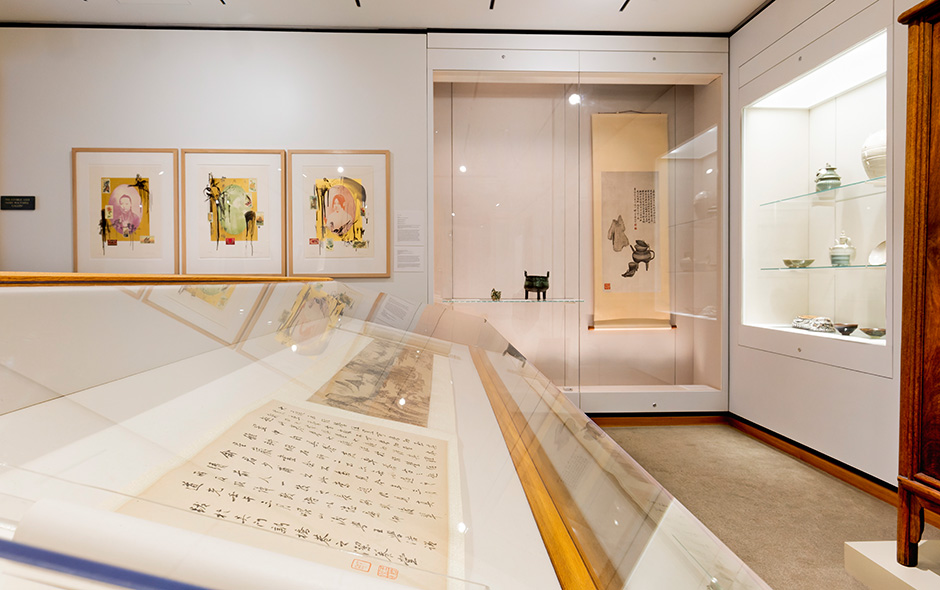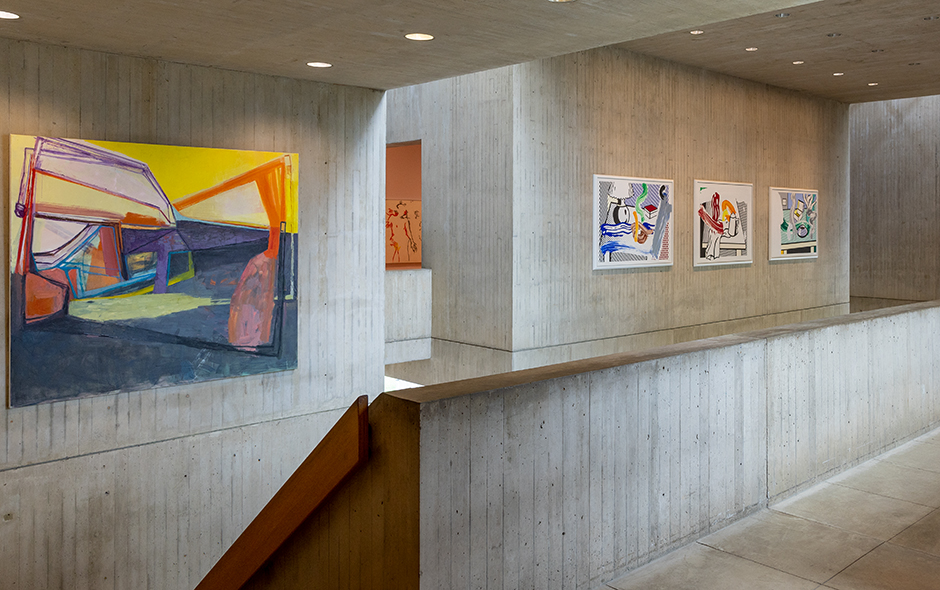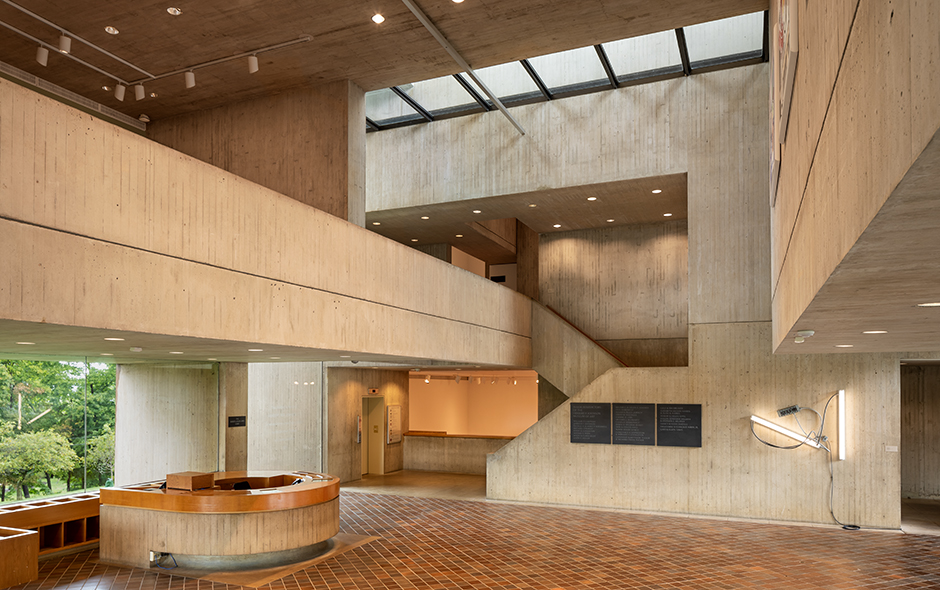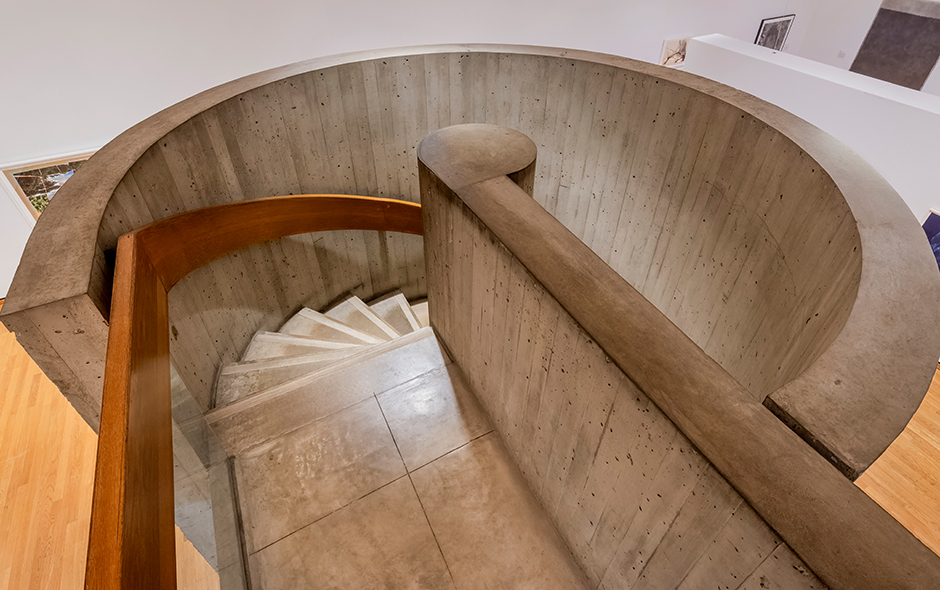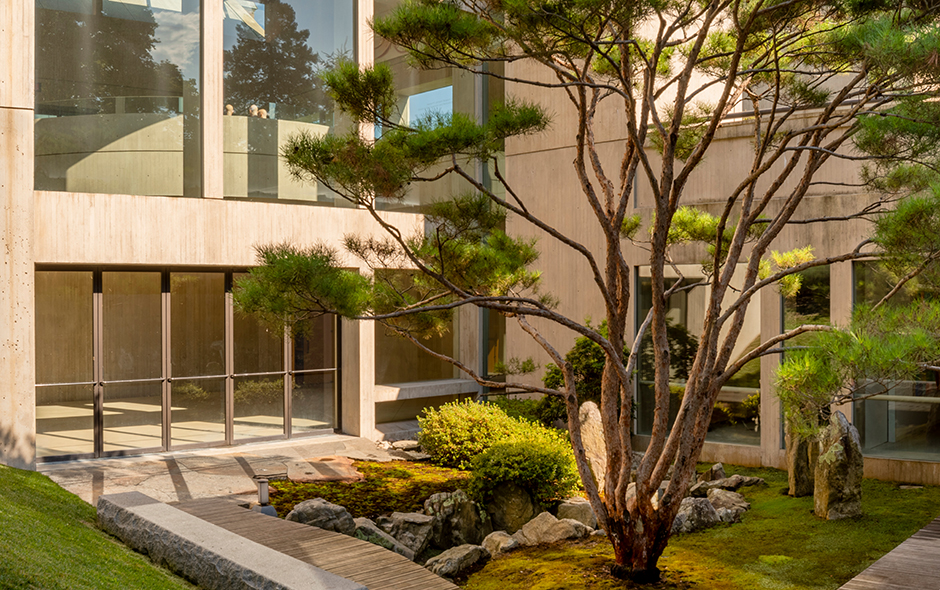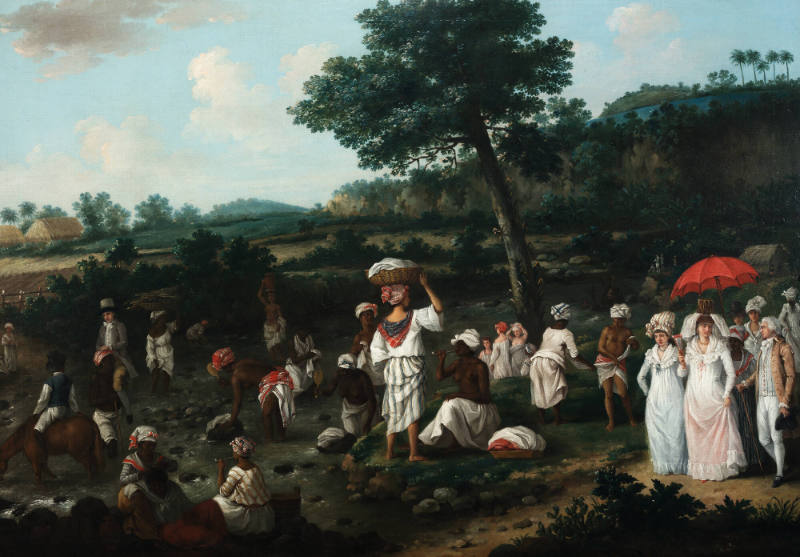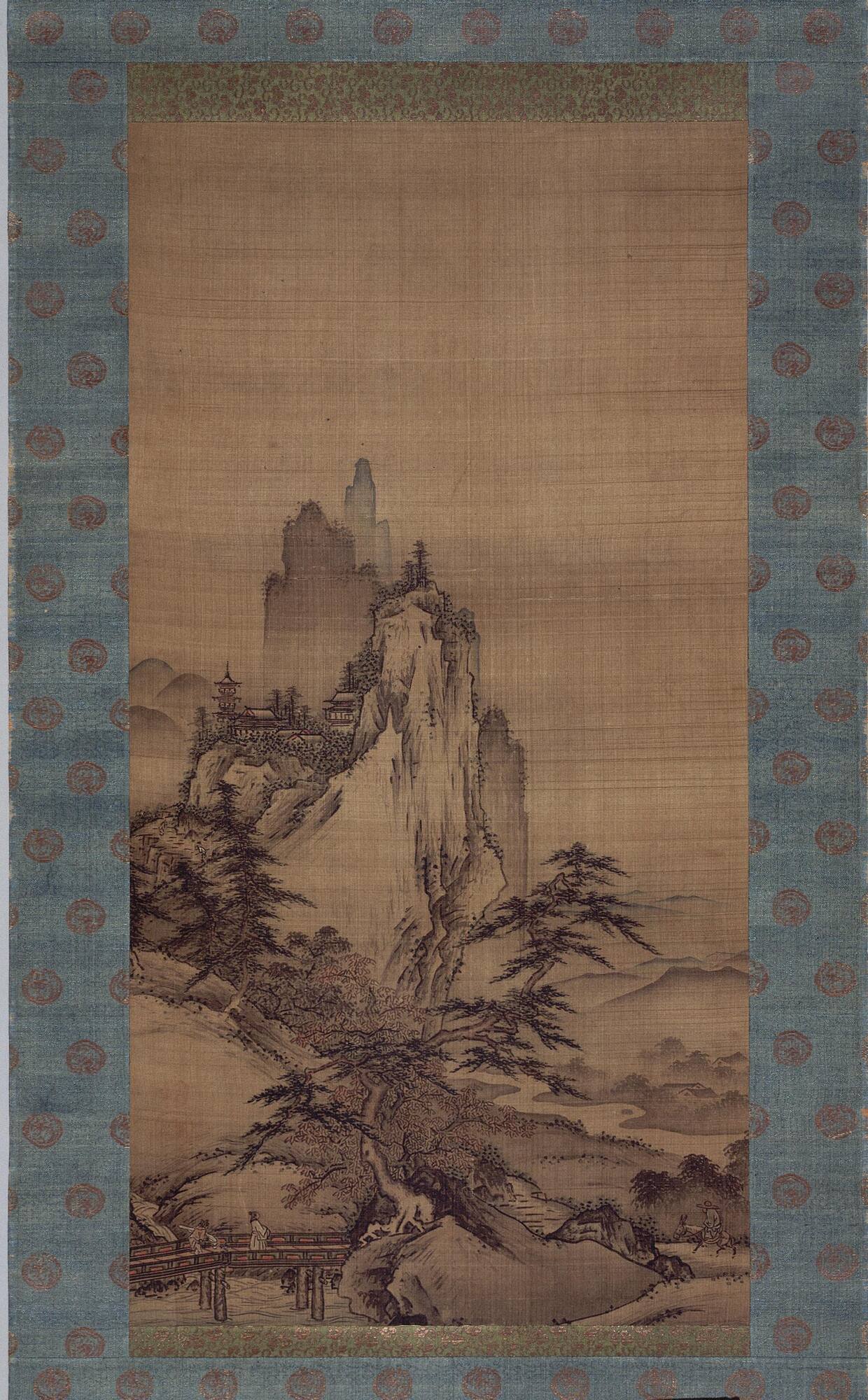
Object Details
Artist
Unkoku Toteki
Date
17th century
Medium
Hanging scroll: ink and colors on silk
Dimensions
27 3/4 x 13 7/8 inches (70.5 x 35.2 cm)
Credit Line
Gift of Martie and Alice Young
Object
Number
88.055
Unkoku Toteki was a grandson of Unkoku Togan (1547–1618), who founded the Unkoku school under the (…)
Unkoku Toteki was a grandson of Unkoku Togan (1547–1618), who founded the Unkoku school under the patronage of the feudal lord Mori Terumoto in Suo province (presently Yamaguchi prefecture). The Unkoku school was influenced by ink paintings of the Muromachi period (1392–1573) and claimed artistic descent from the great painter Sesshu (1520–1606).This painting depicts an idealized Chinese landscape in which a Chinese scholar with his servant crosses a bridge at the left, and another scholar rides a mule while traveling along a path leading up to a temple in the towering peaks. The distant mountains and villages beyond the river are dramatically contrasted with the tall pine firmly rooted to the rock at the center of the foreground. The style of the painting continued typical Muromachi compositions that originated in the painting of the Song and Yuan dynasties in China, and was remodeled on fourteenth- and fifteenth-century Chinese landscapes of the Zhe school during the Ming dynasty. (“Tradition, Transmission, and Transformation in East Asian Art,” curated by Cornell PhD student Yuhua Ding under the supervision of Ellen Avril and presented at the Johnson Museum January 23-June 12, 2016)Unkoku Toteki was a grandson of Unkoku Togan (1547-1618), who founded the Unkoku school under the patronage of the feudal lord Mori Terumoto in Suo Province (presently Yamaguchi Prefecture). The Unkoku school began with ink paintings during the Muromachi period (1392-1573) and claimed artistic descent from the great painter Sesshu (1520-1606). Toteki, after the death of his father To’oku (1582-1615), learned painting from his uncle Toeki (1591-1644). This painting depicts an idealized Chinese landscape and continues the typical Muromachi compositions that used the vertical hanging scroll format made popular during the Song and Yuan dynasties in China. Here a Chinese scholar with his servant crosses a bridge at the left, and another scholar rides a mule while traveling along a path leading up to the temple in the towering mountains. The distant mountains and villages beyond the river in the background are dramatically contrasted with the tall pine firmly rooted to the rock at the center of the foreground. (From “A Handbook of the Collection: Herbert F. Johnson Museum of Art,” 1998)




